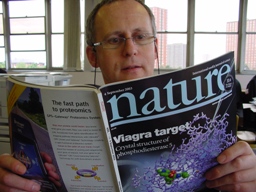
Geoscientist 21.03 April 2011
Dorset has two big things going for it: its geology, especially as displayed along the Jurassic Coast, which is mostly within the County – and its literature.
I review the most recent example of how tourism is increasingly becoming integrated with the UNESCO World Heritage Site concept in
Geoscientist Online, where this month you can find an additional review and
associated article about the Thomas Hardy Society’s latest publication – Thomas Hardy and the Jurassic Coast.
But if you come to visit the Jurassic Coast, where is its front door – its shop window – its point of departure? Where could you go to learn about it, get enthused, see exhibitions or pick up maps and leaflets? Where is its one-stop-shop?
You might cite the charming Victorian Dorset County Museum, in busy and congested Dorchester. Then, in congested and almost car-free Lyme Regis, you can visit the charming and quaint Philpot Museum. Indeed, no visit to Dorset is complete without both. But neither could claim to be an adequate focal point for a tourist-attracting natural wonder of global standing. The short answer is – there is no focal point for the Jurassic Coast.
However, amazingly, slap bang in the middle of the Coast, lies a large brownfield site – a huge area of deprivation, industrial dereliction and depopulation, begging to be “re-purposed”, as planning jargon has it, and waiting expectantly below some relatively low-hanging cash from regional and European development grants.
Not only that - the area is about to become the focus of the 2012 Olympics sailing competition and needs sprucing up. If you wanted convincing of the power of the Olympics to regenerate large areas in short order, go to the Lea Valley, where the Olympic velodrome has just been completed – a mere five years after the bid was won.
This place, of course, is the Isle of Portland, where many old quarries, prison areas and docklands would only be improved by the addition of a state-of-the art interpretation centre, complete with walk-through aquaria, alive with real sharks and swimming animatronic ammonites, and surrounded by ample car parking. A real museum, showing some of the NHM’s Jurassic and Cretaceous collections, currently hidden away in storage, could help fulfil that institution’s remit to place its riches before the public. The local economy would be boosted permanently – providing an all-important legacy that the local Council could buy into.
The time is right – action should be taken now.